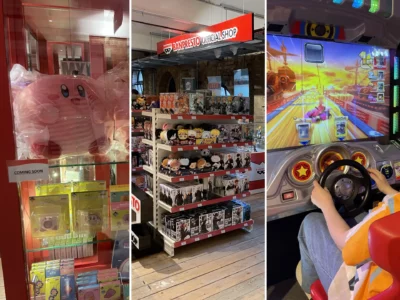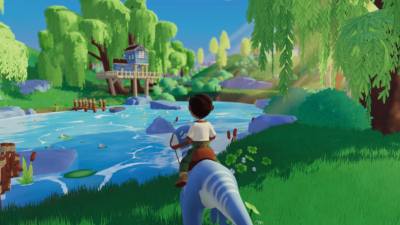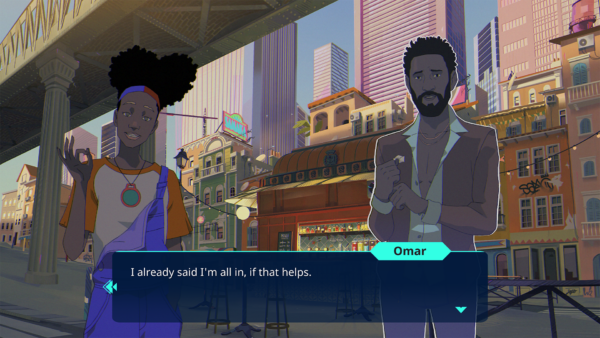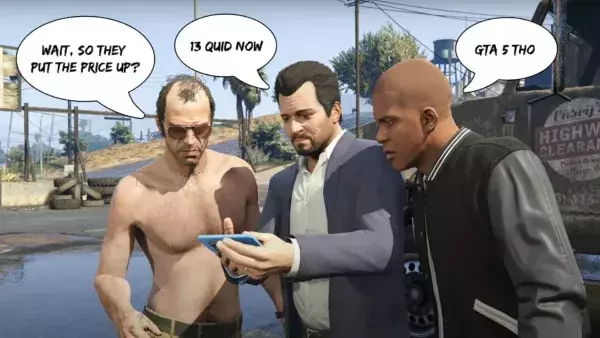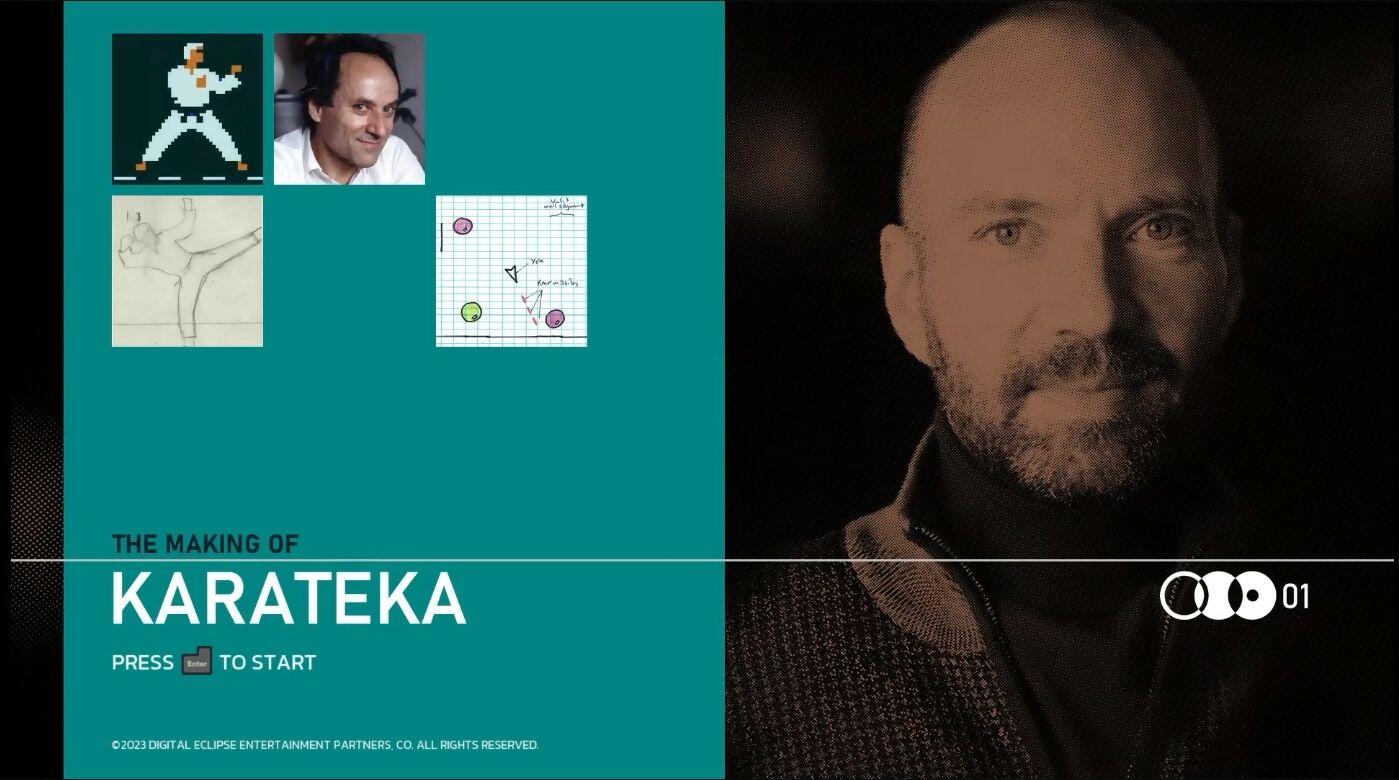
Editorial director Chris Kohler tells us about the work that’s gone into The Making of Karateka – an interactive dive into Jordan Mechner’s seminal game.
Initially developed in 1984 for the Apple II computer, Jordan Mechner’s Karateka was an influential game, but one that players today may be unfamiliar with. An action adventure featuring smooth, roto-scoped animated characters, Karateka was something of a proving ground for Mechner’s 1989 classic, Prince of Persia – an enormously popular game that spawned a series that’s still going in the 21st century.
With that in mind, what’s the best way to present Karateka to a modern audience – and make plain its importance in the history of gaming? Californian developer Digital Eclipse’s solution is The Making of Karateka – an interactive documentary that not only brings the game to modern systems, but also provides a range of prototypes, interviews and other drawings that underline the game’s place in history.
Previously an author, journalist and historian, Chris Kohler joined Digital Eclipse as editorial director in 2020, with Karateka being his first project at the firm. “It was an entirely indie, self published effort,” he says of the project’s early days. “Since it was self-funded, we had to pause work on it every time Digital Eclipse got a big game to work on.”
Kohler recalls that the version of Karateka he saw in 2021 was closer to a more typical retro collection. “It was, ‘click here for design documents, here for a behind the scenes video’. But for me, it made much more sense to have the story told chronologically.”
In his new role, Kohler therefore came up with an idea that would impact the direction of both its Karateka project and what would become Atari 50: The Anniversary Collection – a mixture of playable games, interactive timelines, video interviews and other materials that created a more historically rich package. As Kohler and his collaborators were working on Karateka, “Atari came and told us they wanted something different for their compilation of old games,” Kohler recalls. “That’s when we used what we’d developed for Karateka.”
“I was thinking: most people aren’t going to spend hours playing a single Atari game from 1982,” Kohler continues. “They’re probably going to nibble here and there, like you would at a big buffet. So how do we add that context to make ‘buffet play’ more meaningful? That’s how we came to create the interactive timeline, which gently guides you through the history of Atari. And it will do much the same in Karateka.”
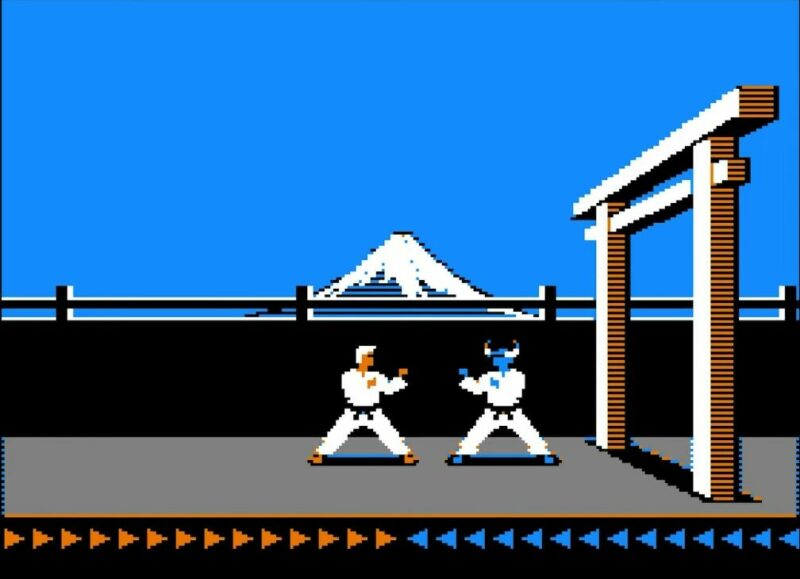
Credit: Digital Eclipse.
Following Atari 50’s release in November 2022, Digital Eclipse had the chance to build on what it learned with The Making of Karateka. “We’re also expanding on several ideas in Atari 50,” says Kohler. “For example, the idea of watch mode. If you don’t want to play the game, we’re adding emulated playthroughs of Karateka, along with a chapter selection system. Basically, at any time you can watch what’s going on in the game, as well as jump in and play.”
Another new addition is the director’s commentary, which as well as contributions from creator Jordan Mechner, also includes his father, “Francis, who is 93 years old, talking and bringing back memories of working together on the game.”
The work was made simpler by the fact that Mechner, who was still a student when he made Karateka, had carefully documented his entire development process. “That’s what made it possible to do an archival release of a game,” explains Kohler. “Every day Jordan sat down, wrote what he did that day, and since he wasn’t going to class too much, he was just sitting in his dorm room developing games. Thanks to the Strong Museum of Play, they scanned all the designs they had, along with the contents of Jordan’s floppy disks. They made great efforts to try and recover everything that was on those old disks.”
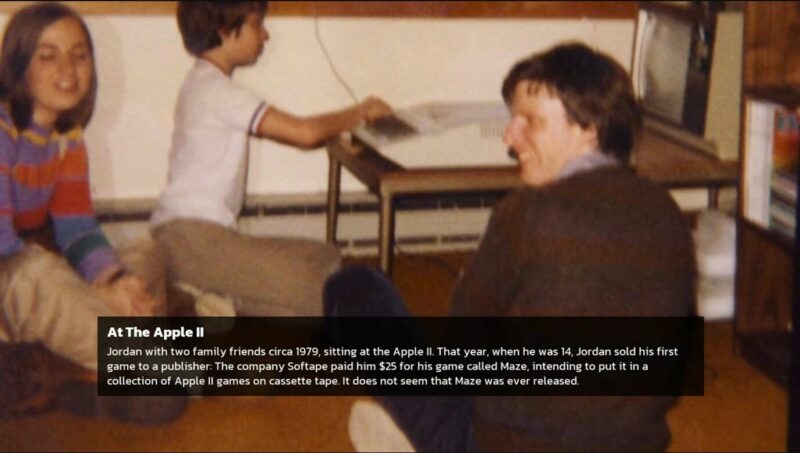
Credit: Digital Eclipse.
For the same reason, The Making of Karateka will feature several unpublished games that Mechner worked on before his breakthrough success. “There were many games that led to Karateka, such as Death Bounce. Jordan wanted to make a clone of an arcade game on the Apple II, as that was a big market, but he was a bit too late. While his clone of Asteroids was pretty competent, the publisher got cold feet, since at the time Atari was getting angry at all the clones being released. Thus, the game remained unpublished. Ironically, today we had Atari’s thumbs up to publish it, and that’s the first game that appears on the timeline – an Asteroids clone.”
The Making of Karateka will also feature a brand new way to experience the game, called Karateka Remastered – a project Digital Eclipse president Mike Mika worked on almost entirely by himself. “Mike is a huge fan – back in the day he actually started porting Karateka on the Commodore Amiga,” says Kohler. “Recently, Jordan himself said that he’d wish he’d sent [that Amiga version] to Broderbund, since they were looking for someone to make a good port. But making a good Karateka port was definitely no easy feat. The only good ports are the ones where Jordan worked together with the programmer.”
Remastered therefore has Karateka’s biggest fan working on its remaster, which even includes sequences that had to be removed from Mechner’s original game. Says Kohler, “Mike also restored content that was cut, such as a leopard enemy which will have its own separate level. He definitely tried to give it a sort of Prince of Persia look, and also added director’s commentaries in certain spots.”

Credit: Digital Eclipse.
The Making of Karateka is described as a documentary that you can play – but what does that mean for its players? “It means I’m not selling you a game, I’m selling you a story,” explains Kohler. “If I just made the game available to play today, even in its most faithful version, I would just be selling the game to people already familiar with it. What I hope is to hear people say, ‘I didn’t think this could be interesting, but now I’m a big fan.’”
In order to appeal to new players, you have to contextualise the game and why it was important, adds Kohler. “While we’re all familiar with the story of the crash of 1983 and Nintendo stepping in to save the day, there are many more interesting stories to tell,” he says. “Karateka is one of them, and that’s why the documentary will feature developers such as Tom Hall and John Tobias talking about how influential the game was for their careers. We discuss Karateka’s impact on the personal computing scene, trying to give a different perspective.”
Read more: Turning back time | Jordan Mechner on Prince of Persia’s legacy
Usually, the most difficult aspect of making a documentary is finding the right people to interview, as well as pull together relevant source material. But, in this case, Mechner had done all the work, so Kohler says the main challenge was finding the right people. “We have an army of subject matter experts. But taking all that information and putting it into a linear story isn’t part of the skillset of an average game developer. That’s where I come in, having worked for years as a journalist and historian. All the extra work on Karateka is difficult and clearly a lot more expensive than just emulating a game, so we have to prove that it’s worth it.”
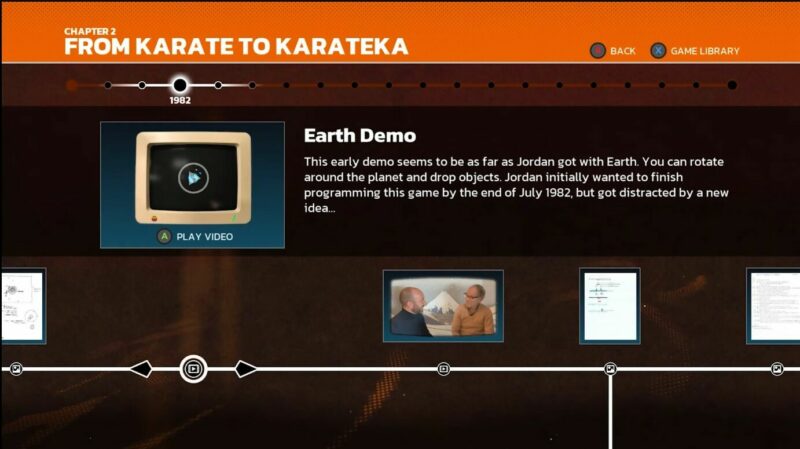
Credit: Digital Eclipse.
The Making of Karateka is the first in what Digital Eclipse is calling the Gold Master series – which means we’re likely to see an entire range of similar interactive documentaries in the future. “It could go on forever,” he laughs, “but I’m also hoping to inspire other developers to do the same. Like, Nintendo could do something similar for Super Mario Bros. Perhaps our work serves as a proof of concept. I’m sure they’re aware that sharing their old story is a good idea. Also, Plumbers Don’t Wear Ties? It’s known as one of the worst games of all time, but there’s surely a fascinating story behind that project. That’s what we’re doing with Karateka, really’ we think the bonus content is the main experience, if presented correctly.”
Far from mere nostalgia, interactive documentaries like The Making of Karateka are a unique means of recounting the history of video games. “It’s us flipping the script on how games work, it’s not a publisher coming to us with an old game, but us contextualising a game for a modern audience. Our job is to make people appreciate what the games are now, not only what they were. If we manage to make this project successful, then it might change the criteria for what is an attractive property to re-release. An interesting story will actually be easier to sell and finally those games will be treated with the respect they deserve”.
With so many fascinating game development stories out there, we’re sure the Gold Master series won’t run out of those any time soon.
The Making of Karateka is out on PC, Xbox One. Xbox Series X/S, Nintendo Switch, PS4 and PS5 this summer.


